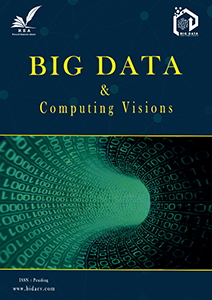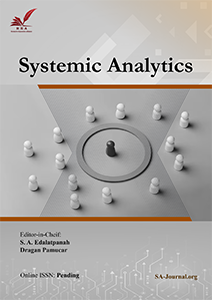Aims and scope
Aims and Scope
Trends in Health Informatics is a leading journal dedicated to the exploration and dissemination of innovative research and advancements in the field of health informatics. It serves as a platform for scholars, researchers, and practitioners to exchange knowledge, share ideas, and contribute to the ongoing development of health informatics.
The journal covers a wide range of topics within the realm of health informatics, aiming to address the challenges and opportunities in utilizing information and communication technologies to improve healthcare delivery, patient outcomes, and population health. The primary focus of the journal is to foster interdisciplinary collaboration and promote evidence-based practices in health informatics.
The key areas of interest for the journal include, but are not limited to, the following:
-
Electronic Health Records: This topic explores the design, implementation, and evaluation of electronic health record (EHR) systems. It encompasses research on improving the usability, efficiency, and effectiveness of EHRs, as well as issues related to data interoperability, exchange, and standardization. The journal welcomes studies that investigate the impact of EHRs on clinical decision-making, patient safety, and healthcare quality.
-
Health Information Exchange: This area covers strategies, technologies, and policies for secure and seamless health information exchange. It includes research on health information exchange architectures, interoperability standards, and protocols. The journal also welcomes studies on patient-centered health information exchange, focusing on empowering patients to access and share their health information while ensuring privacy and security.
-
Health Data Analytics and Big Data: This topic encompasses research on data mining, machine learning, and analytical techniques applied to healthcare data. It explores the analysis of clinical data, genomics, wearables, and mobile health applications. The journal welcomes studies on big data management and processing in health informatics, as well as the development of predictive analytics and decision support systems to improve healthcare delivery and outcomes.
-
Telemedicine and Digital Health: This area focuses on telemedicine innovations, remote patient monitoring, and the use of digital health technologies to enhance healthcare access and delivery. It covers research on telehealth interventions, mobile health apps, and wearable devices for healthcare. The journal also welcomes studies on the integration of telemedicine and digital health into existing healthcare systems, as well as their impact on patient outcomes and satisfaction.
-
E-Mental Health: This topic explores the use of digital technologies in mental health assessment, intervention, and support. It encompasses research on mobile applications, virtual reality, and telepsychiatry in mental healthcare. The journal welcomes studies that address ethical considerations and privacy concerns in e-mental health, as well as the effectiveness and acceptance of digital interventions for mental health conditions.
-
Social Media Analysis for Health: This area examines the use of social media platforms for public health research and surveillance. It covers research on natural language processing, sentiment analysis, and network analysis applied to health-related social media data. The journal welcomes studies that investigate the use of social media for monitoring disease outbreaks, analyzing patient experiences, and understanding health behaviors and trends.
-
Interdisciplinary Collaboration: This topic emphasizes collaborations between health informatics and other disciplines, such as computer science, data science, behavioral sciences, public health, and biomedical engineering. It explores the integration of interdisciplinary expertise to drive technological innovations in healthcare. The journal welcomes studies that highlight the impact of interdisciplinary collaboration on healthcare outcomes and the development of novel solutions to complex health informatics challenges.
In conclusion, Trends in Health Informatics aims to publish high-quality research that advances the field of health informatics and contributes to the improvement of healthcare delivery, patient outcomes, and population health. The journal encourages interdisciplinary collaboration and welcomes studies that address the ethical, legal, and social implications of health informatics research and practice.
 Metrics
Metrics


